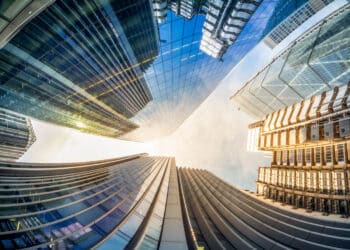There are many different ways to turn a city into a smart city, but the most effective methods use a combination of devices and software. By using modern technology, cities can become smarter and more efficient while also reducing costs.
Here are 5 ways normal cities can be turned into smart cities:
1. Big Data analytics
Smart cities can use Big Data analytics to collect and analyse data from different sources in order to make decisions that will help improve the quality of life of its citizens. For example, if there is an increase in crime rate in one area, the authorities can deploy more policemen or install CCTV cameras there.
In another example, if it is raining heavily in one area, the authorities can plan ahead by deploying more buses or increasing the frequency of trains running on those routes. These are just two examples; there are many others depending on what exactly needs to be monitored and managed by the authorities.
2. Indoor mapping
Indoor mapping is a technology that can be used to map indoor spaces such as shopping malls, airports, hospitals and many others. This is important because it will allow the authorities to track the whereabouts of people in those areas and thus, know where they are at any given time.
By deploying indoor maps for Australian cities, the authorities can have access to a lot of important data real quick. For example, if there is a concert or an event going on at one area in a shopping mall, you can utilise data from indoor maps to guide other people to this event which will eventually result in more revenue. It can also help the authorities in knowing where the crowd in certain areas is concentrated and plan accordingly in case of unforeseen circumstances.
3. Connected vehicles
Connected vehicles are vehicles that have sensors attached to them which collect data about the vehicle itself and its surroundings. These data are then relayed back to the main control centre so that they can be analysed by experts who can make decisions based on these data.
For example, if there are many accidents happening on one particular stretch of road during the day or night, then traffic lights can be adjusted automatically depending on how busy that road is at a particular time of day or night. This could mean changing traffic light timings from 1 minute (during off-peak hours) to 2 minutes (during peak hours) or even turning off some traffic lights during non-peak hours altogether!
4. Smart parking solutions
Smart parking solutions allow for better management of parking spaces in cities by monitoring when cars enter and leave parking lots and thus making sure there is always an available space for motorists looking for a place to park their cars.
With smart parking solutions, you don’t need to worry about driving around looking for an empty space anymore! All you have to do is drive into any parking lot with smart parking solutions installed and your car will be detected immediately by the system which will then guide you towards an empty space! It’s like having your own personal chauffeur!
5. Security cameras & surveillance systems
Security cameras & surveillance systems are used in all cities around the world today but what makes them “smart”? The answer lies within their ability to analyse footage captured by these cameras using powerful computer algorithms and machine learning techniques so as to identify suspicious objects or persons within those videos and alert relevant authorities such as police or security guards when necessary.
A good example would be detecting whether someone has left behind a bag containing explosive materials somewhere near a crowded train station or airport waiting area before it explodes!






